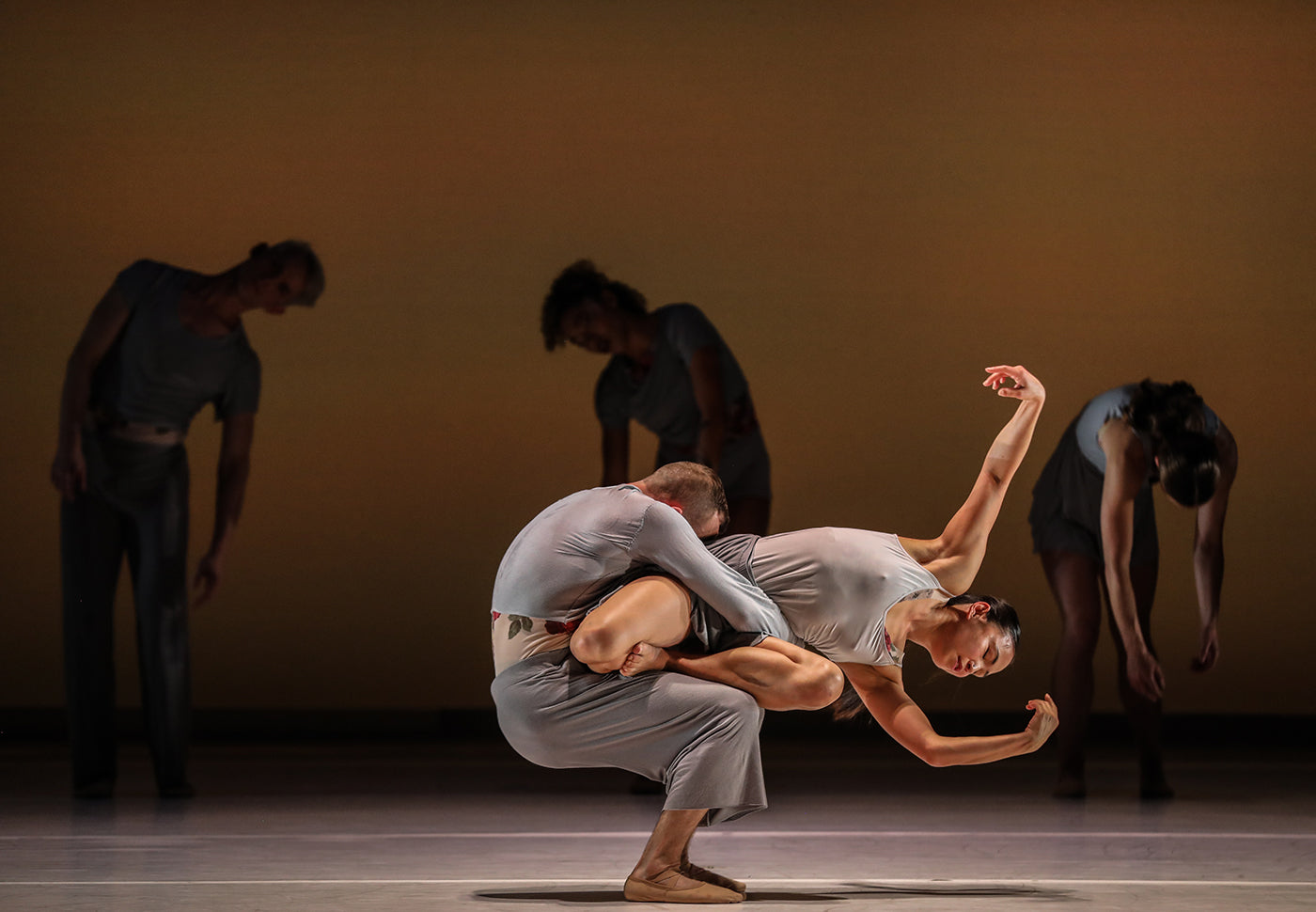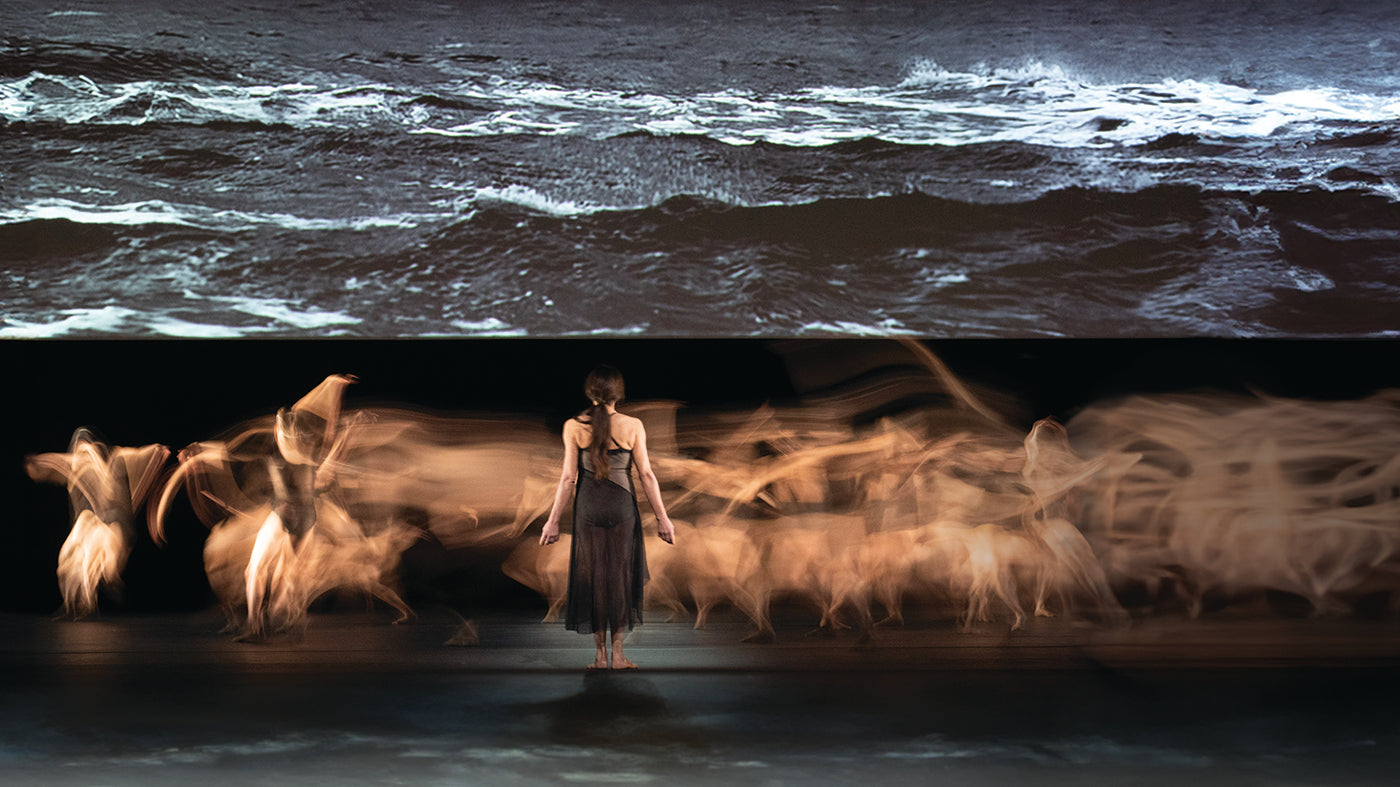But here is the experiential truth: My attention drifted as the latter sections of “Common Ground” lost discernible connection with the music, and I was not alone in this response, if overheard lobby conversations after the performance may be allowed as evidence. This was surprising given how arrestingly “Common Ground” begins. A video projection by Jamie Lyons offers, on enormous scale, a view of the ocean horizon from the ruins of Sutro Baths, a tranquil pool of glass-smooth water in the foreground, a slab of the baths’ eroded concrete protruding towards us with the commanding presence of a Richard Serra sculpture, as gulls screech and waves roll in the distance.
As the scrim lifts, we enter an otherworldly environment of stage fog, an overwhelming gray that feels bright and heavenly rather than oppressive (lighting design by Jim French). Dressed in grey-white feathery pants and loose tunics (costume design by LINES creative director Robert Rosenwasser), the dancers could be shorebirds at low tide. The first two sections of the dance are action-packed, scattershot solos suddenly coalescing in rhythmic unisons. Certain gestures are crisp and memorable, a diagonal of dancers each stopping with a sudden grasp of the left shoulder. That diagonal line is promising; we look for its evolution in future sections—but instead, a diffuseness takes over.
The arrangement of the music is curious, and one wonders if the ordering was driven more by Kronos or by King. “Common Ground” uses four quartets commissioned by Kronos’s “Fifty for the Future” project, works designed for the training of student and emerging professional musicians. (To think of these as “training” works only further boggles the mind as to the caliber of “student” we’re talking about here.) Trey Spruance’s “Seraphita” gets split up, the second movement starting the ballet, the first movement used much later for the ballet’s major pas de deux. In between, Merlijn Twaalfhoven’s “Play” dominates the ballet, and delightfully, the musicians stomping and clapping, the meter teasingly shifting. The dancers surge with this pizzicato energy, and crest onward through the next piece, Yotam Haber’s more solemn “From the Book.” But after the next section of Spruance’s “Seraphita,” wherein Madeline DeVries and Elhassan press into each other, quite forcefully, much of the partnering leveraged by her fists pushing into his palms, comes the final composition, Aleksander Kościów‘s “Hilathi.”
This is thirteen minutes of emotionally devastating music. Chords shift like glaciers, and you feel the slow scrape of friction like a lamentation. It is beautiful music, but challenging to illuminate as movement, no doubt, and King does not seem to have found a formal toehold. Thirteen minutes is a long time for compositionally arbitrary dance solos when we feel no ascending investigation behind them. In the midst of this choreographic flattening, Elhassan gusted through yet again in small miracles, a leg lowering from high à la seconde as he spun.
The evening opened with a reprise of “Handel,” created in 2005 for the Royal Swedish Ballet, and perhaps for that reason danced entirely on pointe by the women (rare in a King ballet). Magisterial Adji Cissoko and Jeffrey Van Sciver were unforgettable in the Largo Adagio from the Concerto Grosso in C, engrossing us in the drama of her impossibly long legs moving with great control through supported arabesques. Babatunji shook things up every time he rushed on with his lightning-strike energy. Maya Harr radiated a cool clarity that mesmerized.









comments